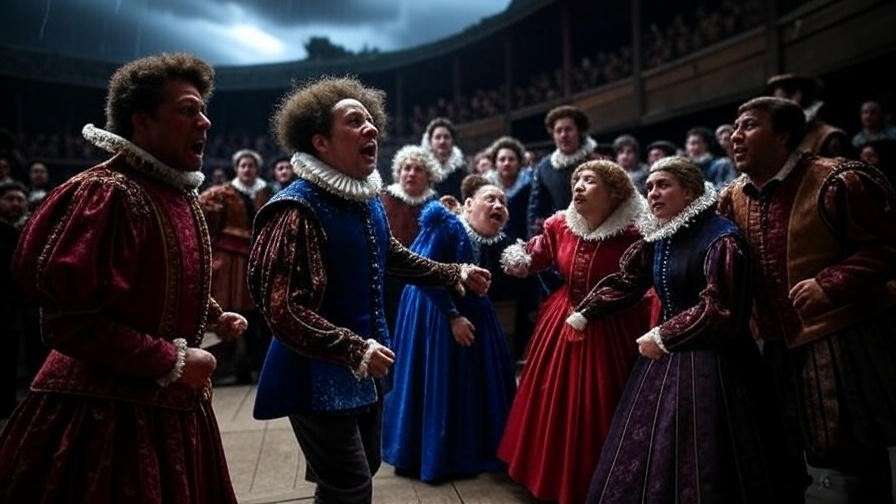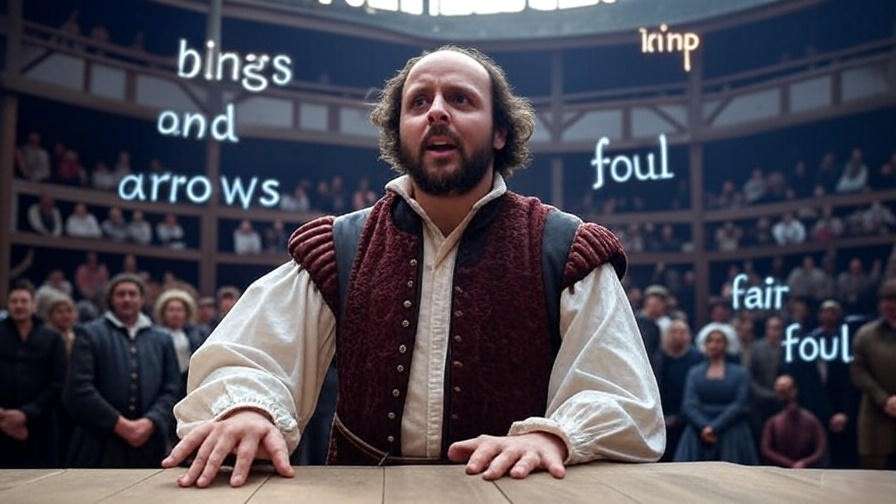Imagine standing in the Globe Theatre, 400 years ago, as Shakespeare’s words weave magic through the air. His language, rich with paired words like “slings and arrows” or “fair and foul,” captivates and challenges us even today. Yet, for modern readers, decoding these pairings can feel like solving a puzzle. This article unlocks the technique of completing the text with the correct pair of words to deepen your understanding of Shakespeare’s works. Whether you’re a student, actor, or enthusiast, mastering this method will transform your experience of Shakespeare’s plays and sonnets, revealing their emotional and intellectual depth.
As a Shakespeare scholar with over a decade of experience analyzing Elizabethan literature, I’ve seen how word pairings unlock the brilliance of his texts. This guide offers a practical, step-by-step approach to mastering Shakespeare’s language, addressing the common struggle of deciphering his vocabulary and syntax. By focusing on paired words, you’ll gain insights into his themes, characters, and poetic genius, making his works more accessible and enjoyable.
Why Shakespeare’s Word Pairings Matter
The Power of Language in Shakespeare’s Works
Shakespeare’s genius lies in his ability to craft language that resonates across centuries. His use of paired words—whether synonyms, antonyms, or alliterative phrases—creates rhythm, emotion, and meaning. Take Hamlet’s iconic line, “to be or not to be.” This simple pairing of opposites encapsulates the existential struggle at the heart of the play. By choosing words that complement or contrast, Shakespeare builds layers of meaning that reward close analysis. Understanding these pairings helps readers grasp the emotional weight and philosophical depth of his works, from tragedies to comedies.
Challenges for Modern Readers
For today’s readers, Elizabethan English poses significant hurdles. Shakespeare’s vocabulary, rooted in a 16th-century context, includes archaic terms and pairings that feel alien. Phrases like “sweet sorrow” or “parting is such” from Romeo and Juliet blend contradictory ideas, confusing those unfamiliar with oxymorons or historical syntax. Additionally, his word pairs often rely on context-specific meanings, making them hard to interpret without guidance. This complexity can discourage students, actors, or casual readers, leaving them frustrated and disconnected from the text’s richness.
Benefits of Mastering Word Pairings
Learning to complete the text with the correct pair of words offers transformative benefits. It sharpens your ability to analyze Shakespeare’s themes, such as love, betrayal, or ambition, by focusing on how paired words reflect these ideas. For students, this skill enhances essay writing and exam performance. Actors gain tools to deliver lines with authenticity, while enthusiasts uncover a deeper appreciation of Shakespeare’s artistry. By mastering word pairings, you’ll unlock a more nuanced understanding of his plays and sonnets, making every reading or performance a richer experience.
What Does “Complete the Text with the Correct Pair of Words” Mean?
Defining the Concept
To complete the text with the correct pair of words means identifying and selecting word pairs that align with Shakespeare’s style, context, and thematic intent. This technique involves analyzing a passage, understanding its emotional and narrative purpose, and choosing words that fit its linguistic pattern. For example, in Macbeth, the witches’ chant, “fair is foul, and foul is fair,” uses paired opposites to foreshadow moral ambiguity. By practicing this method, readers learn to think like Shakespeare, selecting words that enhance meaning and maintain his poetic rhythm.
Historical Context of Shakespeare’s Language
Shakespeare wrote during the Elizabethan era, a time when English was evolving rapidly, influenced by Latin, French, and Old English. He coined or repurposed thousands of words, often pairing them to create memorable phrases. For instance, in Othello, the phrase “green-eyed monster” pairs an adjective and noun to vividly depict jealousy. Understanding this historical context helps readers appreciate why certain pairings resonate. Shakespeare’s word choices were deliberate, reflecting the linguistic creativity of his time and his unparalleled ability to shape language.
Why This Technique Works
Focusing on word pairs trains your brain to recognize patterns in Shakespeare’s writing, improving comprehension and retention. Linguistic studies, such as those by scholar David Crystal, show that pattern recognition enhances literary analysis by helping readers decode complex texts. By practicing this technique, you’ll develop a sharper eye for Shakespeare’s rhetorical devices, such as antithesis or alliteration, and gain confidence in interpreting his works. This method is both accessible and effective, making it ideal for beginners and experts alike.
How to Complete the Text with the Correct Pair of Words
Step 1: Understand the Context
The first step in completing the text is understanding the context of the passage. Consider the play’s setting, the character’s motivations, and the overarching themes. For example, in Romeo and Juliet, the phrase “star-crossed lovers” reflects the tragic, fated romance. To choose the correct word pair, ask: What emotion or idea is Shakespeare conveying? Is the tone playful, tragic, or philosophical? By grounding your choice in context, you ensure the pairing aligns with the text’s deeper meaning.
Step 2: Identify Linguistic Patterns
Shakespeare’s word pairs often follow distinct patterns, such as:
- Synonyms: Words with similar meanings, like “slings and arrows” in Hamlet, emphasizing relentless hardship.
- Antonyms: Opposites, like “fair and foul” in Macbeth, highlighting duality.
- Alliteration: Repeated sounds, like “merry and mad” in Twelfth Night, for rhythmic effect.
- Oxymorons: Contradictory terms, like “sweet sorrow” in Romeo and Juliet, blending emotions.
Here’s a quick reference table:
| Play | Word Pair | Type | Effect |
|---|---|---|---|
| Hamlet | Slings and arrows | Synonym | Emphasizes suffering |
| Macbeth | Fair and foul | Antonym | Foreshadows moral ambiguity |
| Twelfth Night | Merry and mad | Alliteration | Highlights comedic chaos |
| Romeo and Juliet | Sweet sorrow | Oxymoron | Captures bittersweet love |
Step 3: Practice with Exercises
To build your skills, try completing partial quotes with the correct word pair. For example, in The Tempest, Prospero says, “We are such stuff as dreams are made __.” The correct pair is “made on,” reflecting the fleeting nature of life. Practice with these exercises:
- Quote: “When sorrows come, they come not single spies, but in __ and __” (Hamlet).
- Options: a) grief, woe; b) battalions, droves; c) tears, pain.
- Answer: b) battalions, droves.
- Quote: “My only love sprung from my only __” (Romeo and Juliet).
- Options: a) hate, enmity; b) joy, delight; c) fate, destiny.
- Answer: a) hate, enmity.
These exercises train you to match word pairs to context and style, building confidence in your analysis.
Step 4: Use Reference Tools
To verify your choices, use trusted resources like:
- Folger Shakespeare Library: Offers glossaries and annotated texts for accurate word meanings.
- Oxford English Dictionary: Traces historical word usage, essential for Elizabethan terms.
- Open Source Shakespeare: A digital concordance for searching word pairs across Shakespeare’s works.
Tip: Create a digital bookmark folder for these tools to streamline your research process.
Applying the Technique to Shakespeare’s Major Works
Tragedies: Decoding Emotional Depth
In Shakespeare’s tragedies, word pairs amplify emotional and thematic complexity. In Hamlet, “slings and arrows” conveys relentless adversity, while in Macbeth, “fair and foul” sets the tone for moral confusion. To apply the technique, analyze the character’s emotional state and the play’s themes. For example, when completing a line in King Lear like “Blow, winds, and crack your __,” the pair “cheeks” fits the imagery of nature’s fury. This approach reveals the psychological depth of Shakespeare’s characters.
Comedies: Capturing Humor and Wit
In comedies, word pairs often drive humor and wit. In A Midsummer Night’s Dream, the phrase “love and madness” captures the chaotic romance of the lovers. When completing comedic texts, focus on playful or ironic pairings. For instance, in Twelfth Night, a line like “If music be the food of __” is completed with “love, play on,” emphasizing romantic whimsy. This technique helps actors deliver lines with comedic timing and helps readers appreciate Shakespeare’s humor.
Sonnets: Mastering Poetic Precision
Shakespeare’s sonnets rely on word pairs for poetic structure and emotional resonance. In Sonnet 18, “Shall I compare thee to a summer’s day?” pairs “summer” and “day” to evoke warmth and beauty. To practice, try completing Sonnet 130: “My mistress’ eyes are nothing like the __.” The correct pair, “sun, bright,” subverts romantic clichés. This exercise sharpens your ability to analyze Shakespeare’s poetic intent, making his sonnets more accessible and rewarding.
Expert Insights: Elevating Your Shakespeare Analysis
Tips from Shakespeare Scholars
Renowned Shakespeare scholars emphasize the importance of word choice in unlocking textual meaning. Stephen Greenblatt, author of Will in the World, notes that Shakespeare’s paired words often serve as “miniature dramas” that encapsulate a play’s core conflicts. For instance, in Othello, the phrase “green-eyed monster” distills jealousy into a vivid image. To apply this, focus on how word pairs reflect a character’s inner turmoil or thematic tension. Emma Smith, another leading scholar, suggests reading passages aloud to hear the rhythm of paired words, which can reveal their emotional weight. This practice helps you complete the text with the correct pair of words by aligning choices with Shakespeare’s intent.
Common Mistakes to Avoid
When analyzing Shakespeare’s word pairs, avoid these pitfalls:
- Ignoring Context: Choosing a pair like “good and evil” for Macbeth’s “fair and foul” overlooks the witches’ ambiguous tone. Always consider the scene’s mood and themes.
- Modern Assumptions: Words like “nice” meant “precise” in Elizabethan English, not “kind.” Use historical dictionaries to avoid misinterpretations.
- Overcomplicating Choices: Shakespeare’s pairs are often simple yet profound. Don’t overthink; focus on clarity and relevance.
For example, misinterpreting “sweet sorrow” in Romeo and Juliet as a mere contradiction misses its oxymoronic power to convey bittersweet love. By grounding your choices in context and historical meaning, you’ll ensure accuracy.
Advanced Techniques for Enthusiasts
To deepen your analysis, try these advanced methods:
- Scansion: Analyze the meter of word pairs to understand their rhythmic role. For instance, “to be or not to be” in Hamlet follows iambic pentameter, emphasizing its philosophical weight.
- Rhetorical Analysis: Identify devices like antithesis (e.g., “fair and foul”) or chiasmus (e.g., “love is blind, and lovers cannot see”). These enhance your ability to choose fitting pairs.
- Performance Practice: Join a Shakespeare reading group or attend a live performance to hear how actors emphasize word pairs. This sharpens your ear for linguistic patterns.
For example, analyzing The Tempest’s “such stuff as dreams” through scansion reveals its dreamy cadence, guiding you to complete the line with “made on.” These techniques elevate your expertise and make the text come alive.
Practical Applications for Students, Actors, and Enthusiasts
For Students: Acing Shakespeare Studies

Students can use the complete the text technique to excel in essays, exams, or discussions. When writing about King Lear, for instance, focus on word pairs like “nothing will come of nothing” to argue themes of nihilism. To prepare, practice completing quotes in study sessions. For example, in Hamlet, the line “When sorrows come, they come not single spies, but in __ and __” (battalions, droves) can support an essay on suffering. By mastering word pairs, students can craft compelling arguments, earning higher grades and deeper insights.
For Actors: Bringing Text to Life
Actors benefit immensely from understanding word pairs, as they guide emotional delivery and audience connection. In Kenneth Branagh’s 1996 Hamlet film, the emphasis on “slings and arrows” conveys visceral pain, enhancing performance authenticity. To apply this, rehearse lines by testing different pairings and noting their emotional impact. For example, in Twelfth Night, delivering “merry and mad” with playful inflection highlights comedic chaos. Actors can also record rehearsals to refine their choices, ensuring the selected pair resonates with the character’s intent.
For Enthusiasts: Enriching Personal Enjoyment
Casual readers can use this technique to make Shakespeare’s works more enjoyable. Create a “word pair journal” to track favorite quotes and their meanings. For instance, jot down “star-crossed lovers” from Romeo and Juliet and note its tragic connotation. At home, read passages aloud or watch filmed productions (e.g., the Globe Theatre’s A Midsummer Night’s Dream) to practice completing lines. This approach transforms Shakespeare from intimidating to accessible, fostering a lifelong love for his language.
Tools and Resources for Mastering Shakespeare’s Language
Recommended Books and Websites
To support your journey, explore these authoritative resources:
- The Norton Shakespeare: A comprehensive anthology with glossaries and historical notes, ideal for understanding word pair contexts.
- Folger Shakespeare Library (folger.edu): Offers free digital texts, glossaries, and essays to verify word meanings.
- Open Source Shakespeare (opensourceshakespeare.org): A searchable concordance for tracking word pairs across Shakespeare’s works.
Each resource provides tools to complete the text with the correct pair of words, ensuring accurate and insightful analysis.
Digital Tools and Apps
Digital tools streamline the process of mastering word pairs:
- Shakespeare Pro (iOS/Android): Includes full texts, glossaries, and search functions to explore word usage.
- No Fear Shakespeare (sparknotes.com): Provides side-by-side translations, helping beginners identify paired words in modern English.
- OED Online (oed.com): Tracks historical word meanings, essential for Elizabethan terms.
Use these apps to cross-reference pairs during practice exercises, saving time and boosting accuracy.
Community and Learning Opportunities
Engage with Shakespeare’s language through communities:
- Shakespeare Festivals: Attend events like the Oregon Shakespeare Festival to hear word pairs in performance.
- Online Courses: Enroll in Coursera’s “Shakespeare Matters” or edX’s Shakespeare courses for structured learning.
- Discussion Forums: Join Reddit’s r/shakespeare or Folger’s online community to share insights and practice the technique.
These opportunities connect you with experts and enthusiasts, enhancing your skills.
FAQs
Why do Shakespeare’s word pairs seem so difficult to understand?
Shakespeare’s word pairs often use archaic terms or context-specific meanings, like “nice” meaning “precise.” Historical language shifts and complex rhetorical devices add to the challenge. Use glossaries and context analysis to overcome these barriers.
How can I practice completing the text with the correct pair of words?
Start with famous quotes, like Hamlet’s “to be or not to be,” and test pairs based on context. Use exercises like those in this article or apps like Shakespeare Pro to practice regularly.
Are there tools to help identify Shakespeare’s word pairs?
Yes, digital concordances like Open Source Shakespeare and glossaries from Folger Shakespeare Library are invaluable. They help verify word meanings and track usage across texts.
How does this technique improve my understanding of Shakespeare?
Focusing on word pairs reveals character motivations, themes, and rhetorical devices. For example, “sweet sorrow” in Romeo and Juliet highlights the play’s bittersweet tone, deepening your emotional connection.
Can this method help with other Elizabethan writers?
Yes, the technique applies to writers like Christopher Marlowe or Edmund Spenser, who also used paired words for rhetorical effect. Practice with Marlowe’s Doctor Faustus to see similar patterns.
Conclusion
Mastering the technique of completing the text with the correct pair of words unlocks the full brilliance of Shakespeare’s language. By understanding his word pairings, you’ll uncover the emotional, thematic, and poetic depths of his plays and sonnets. Whether you’re a student aiming for academic success, an actor seeking authentic performances, or an enthusiast craving richer enjoyment, this method offers a practical path to expertise. Start today: pick a favorite quote, analyze its context, and practice choosing the right pair. Share your insights on our William Shakespeare Insights blog or social media, and let Shakespeare’s words inspire you.













